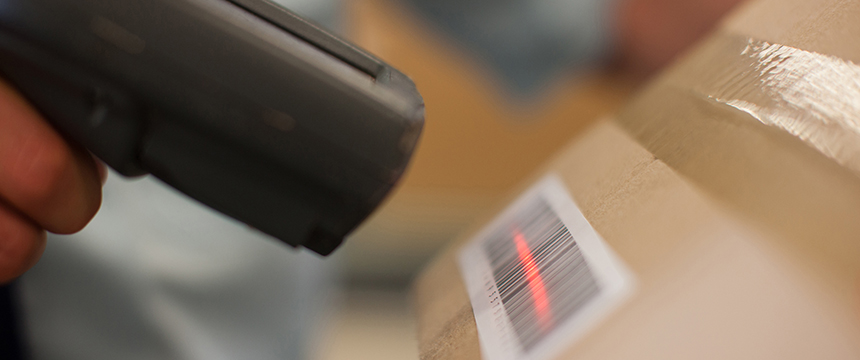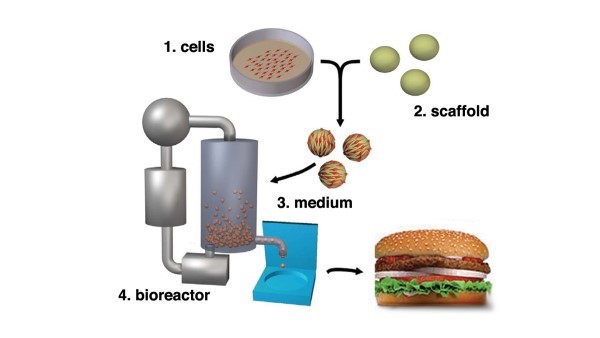
Welcome to issue two of Foley’s Manufacturing MarketTrends newsletter, which highlights key trends with the potential to make 2019 a year of change for manufacturers. In this issue, we will explore collaboration between the manufacturing and food and beverage industries – and more specifically, how artificial intelligence, big data, and machine learning in food processing are changing the way manufacturers compete in the marketplace. We will also examine the use of technology to better streamline and reduce the cost of your supply chain and the future of cell-based meat products.
Market Intelligence
McDonald’s will spend approximately $300 million to purchase Dynamic Yield Ltd., an artificial intelligence firm, in order to better personalize its menus by taking into account factors such as the weather, regional preferences and the time of day. A recent study by the Technical Centre for Agricultural and Rural Cooperation, which included interviews with over 120 agribusiness leaders, revealed that farmers in Africa are increasingly turning to smartphone-based solutions for weather and planting information, and for supply-chain management and logistics. WeChat has also launched a mini-program capable of tracing the origins of baby formula, allowing consumers to verify a formula’s manufacturer, production date and batch number. And the Monell Chemical Senses Center has analyzed almost 400,000 food reviews posted by Amazon customers, coming to the conclusion that food products are overly sweetened.
The common ingredient? Technology. Artificial intelligence, big data, and machine learning are helping to grow more food, make sure that food is delivered more safely, allow consumers to verify the quality and provenance of what they consume and, yes, even allow manufacturers to learn how consumers react to their food products.
Big data and machine learning are already being used by farmers to predict yields and understand weather patterns that can affect crops. Understanding weather patterns can also help farmers produce food more efficiently, minimizing the environmental impact and resource usage associated with food production. These advantages are not limited to agricultural farming. The B-GOOD project is using big data to promote healthy and sustainable beekeeping across the European Union by collecting real-time data related to colony health. Once created, technology is also helping get food from “farm to table.” Companies are applying machine learning-based imaging techniques to food supply chains to improve food quality, reduce waste and monitor the freshness of the product throughout the supply chain on a near-constant basis. The traceability of the food supply chain is also an area garnering keen attention, as will be discussed below.
The use of artificial intelligence and big data to predict what products to stock and how to best market those products to consumers is already happening. The endpoint of that effort is personalized nutrition: using big data techniques on a consumer’s genetic and activity profile to make specific recommendations about what and how much to eat in order to achieve the consumer’s goals. Like personalized medicine, the promise is great, but there is still much work to be done.
What, exactly, the future of food will look like is still developing. What is clear is that our relationship to food is going to change, from farm to table, and that the appetite for using technology to drive that change is growing.
Supply Chain Traceability and Blockchain
Supply chain traceability is the ability to track the movement of a product forward through the supply chain from raw material to finished good and back from finished good to raw material. Supply chain traceability is crucial in many industries, but arguably none more so than the food industry, where concerns about contamination, intentional adulteration, and bioterrorism are ever-present. In fact, these concerns led federal lawmakers to mandate the traceability of food via the Bioterrorism Act of 2002 and the Food Safety Modernization Act of 2011.

Some of the keys to successfully stopping outbreaks of foodborne illnesses through food traceability protocols are the accuracy and speed of obtaining tracking information and the inability of third parties to manipulate the tracking information. As a result, it is not a surprise that blockchain technology is being implemented for food traceability.
A blockchain is an “incorruptible digital ledger of economic transactions that can be programmed to record not just financial transactions but virtually everything of value.” Digital data is recorded in “blocks,” which are each assigned a unique “hash.” The hash serves as an identifying “seal” that ensures the data on the block have not been tampered with. A key attribute of a blockchain is that the data is shared or “distributed.” Imagine a spreadsheet containing digital data (the digital ledger) that is duplicated thousands of times and distributed to numerous computers on a vast network. A copy of that spreadsheet is updated every time a single item is changed. The new version of the spreadsheet is redistributed to those computers—each of which stores its own copy of the same spreadsheet, including every version of the spreadsheet from the time of its creation. Because each computer on the network stores its own copy of every historical version of the spreadsheet, there is no one “central” repository or administrator of the data. Rather, the distributed ledger is “decentralized.”
Because the data resides on a decentralized database that is transparent to all who have access, blockchain technology has great appeal for sprawling supply chains, particularly in the food industry. Retail giants like Walmart have employed blockchain technology to track certain SKUs for food safety purposes. If there is a need to identify precisely where a SKU of organic lettuce was sourced, the transparency of blockchain technology now affords participants the ability to do so in a matter of seconds instead of days. Indeed, some commercial food brands have even begun labeling their products with QR codes that will provide consumers with tracing information about the loaf of “certified gluten free” or “certified organic” bread they toss into their grocery carts. Long gone are the days when most people had the milkman bring them a quart of milk from the local dairy farm. However, blockchain technology has the ability to reintroduce the dairy farm to those inclined to have a little cream with their coffee each morning.
The Future of Food
What Is Cellular Agriculture?
Cellular agriculture refers to the production of agricultural products from cell cultures. Through cellular agriculture, meat, poultry and fish can be produced ex vivo, or grown outside the animal. The finished product – commonly referred to as cultured, clean or cell-based meat – replicates the characteristics of muscle harvested from food-producing animals.
How Are Cell-Cultured Foods Made?
The production process is quite complex and varies among producers. At a high level, there are four core elements to production: (1) cell cultures, (2) scaffolds, (3) media and (4) bioreactor (cultivator).
Cells are obtained from food-producing animals, healthy at the time of biopsy. The cells are subsequently separated, transferred in a sterile environment and placed in a bioreactor (also referred to as a cultivator). Once placed in the cultivator, the cell cultures are fed nutrients known as media. Media is a mixture of ingredients that works as a food source for cell lines. The cultivator controls food supply inputs and temperature, the cells are continuously monitored and, once the meat is cultivated, meat tissues are harvested and stored under appropriate conditions. See picture included here (P.D. Edelman, D.C. McFarland, V.A. Mironov, and J.G. Matheny. Tissue Engineering. May 2005).

Scaling Up Production
Product development efforts are well underway across the globe. In late 2018, Aleph Farms debuted the very first cell-cultured steak. Significant investments from Tyson Foods’ venture capital arm, Tyson Ventures, as well as from Cargill, Bill Gates and Richard Branson, among others, are driving innovation in the field and helping startups reduce costs and scale up production.
Cell-based meat could hit supermarket shelves within the next five years. Before that happens, stakeholders must confront a number of questions. Among them: Who will be the key regulators? How will the regulators work to ensure product safety? Will consumers actually want to eat hamburgers, chicken nuggets and fish fillets produced in such a novel way and perhaps even pay a premium for them? Click here for more.
Legal Developments
The Regulatory Conversation
A recently issued Memorandum of Understanding (March 7, 2019) outlines the U.S. government’s current thinking regarding a proposed pathway for cell-based meat and poultry. The MOU indicates that the FDA will oversee cell collection, cell banks, and cell growth and differentiation. Oversight then shifts to the USDA during the cell harvest stage. The USDA’s core tasks will be inspection and labeling. Upon harvest, the USDA will conduct inspection activities at cell-based food processing facilities. This means that any establishment engaged in the business of processing harvested USDA-amenable, cell-based foods will need to obtain a federal grant of inspection from the USDA and all such foods will need to bear a USDA mark of inspection.
Many critical questions core to developing a functioning regulatory review process remain to be answered: How will the FDA and the USDA initiate their respective application processes? How long will it take to obtain premarket approval? What will inspections of production facilities look like? How should these products be labeled? The devil will be in the details.
Safety Considerations & Potential Hazards
Regulators are focused on working with stakeholders to:
- Consider and develop appropriate controls for potential hazards that may arise during all stages of production, i.e., culturing and harvesting, processing, and packaging.
- Understand the safety profile of the cell culture media used to produce cell-based foods.
- Leverage best practices from the traditional meat, poultry and seafood production context, as well as the biomedical arena, as appropriate, to ensure that meat and poultry produced by way of cellular agriculture are safe and wholesome.
- Consider how these products will compare to traditionally produced meat and poultry from a compositional, nutritional and organoleptic standpoint.
Labeling
As of this writing, no set nomenclature has been settled upon for meat, poultry or seafood produced through cellular agriculture. Among conventional animal agriculture interests, some contend that terms such as “meat” and “beef” should not be used to describe products produced through cellular agriculture. Others have expressed some openness to using “meaty” terms, provided that the labeling clearly indicates how the product was produced. In this regard, some commenters have called for the establishment of standards of identity for cell-cultured foods to distinguish them from their conventionally produced counterparts. At a recent industry meeting and in the trade press, the USDA has indicated that it is strongly considering proposing such standards of identity within the next 12 months.

